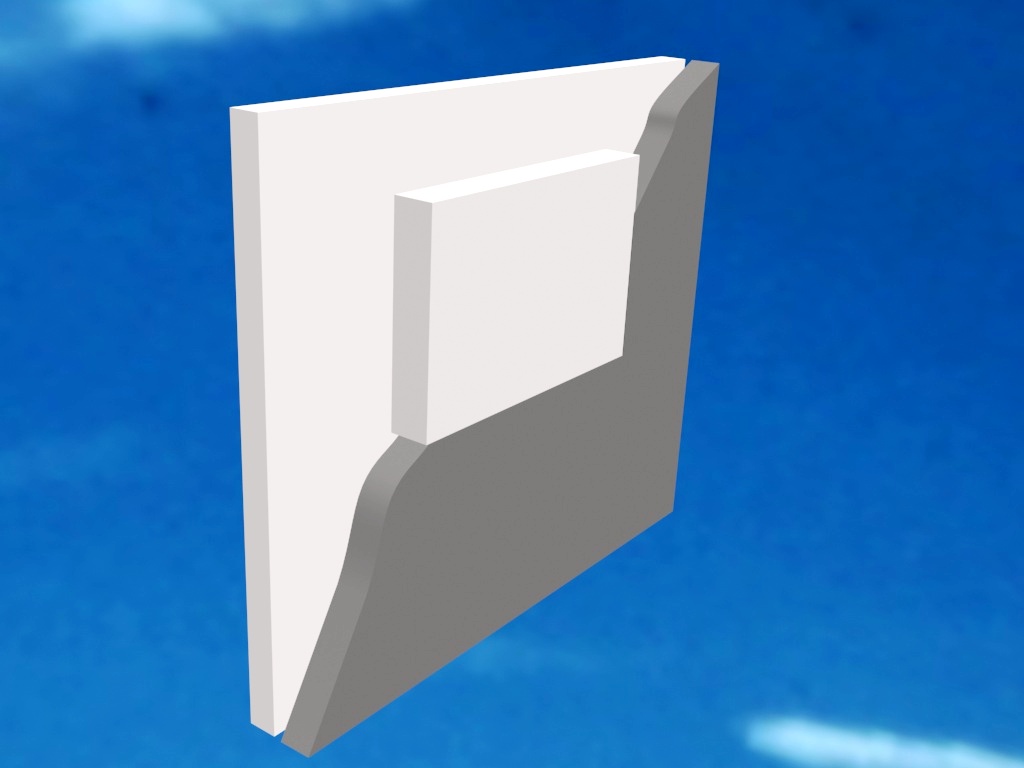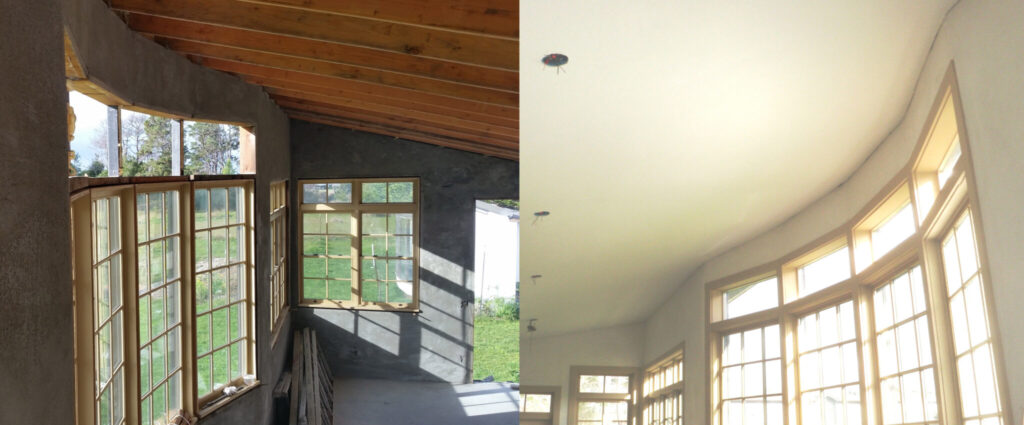
It is routine to build out of vegetable matter, but that has just a few problems…

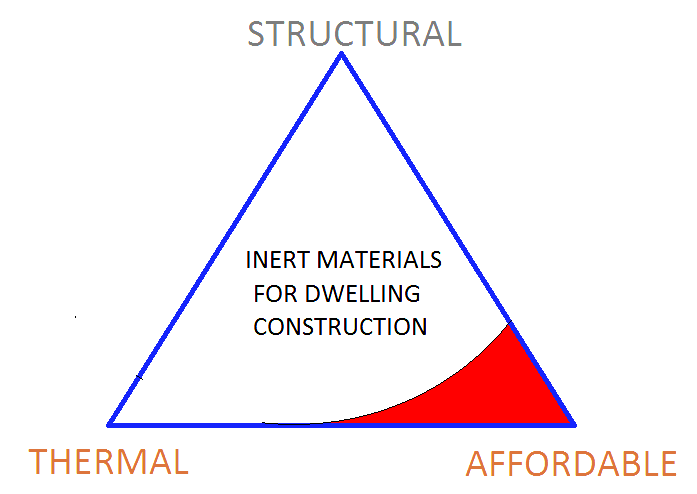
Hard to get all 3.
Building with Inert Materials
But inert materials have some problems as well – mostly thermal bridging. Also, seismic performance and labor costs are issues. We have found there to be a continuous tension between achieving the virtues of Structural Requirements, Thermal Performance, and Affordability. In other words, it is generally more challenging to design and build structure of inert materials that also performs really well thermally in colder climates. This improved design and construction generally costs more.
Our goal is to make it cost less.
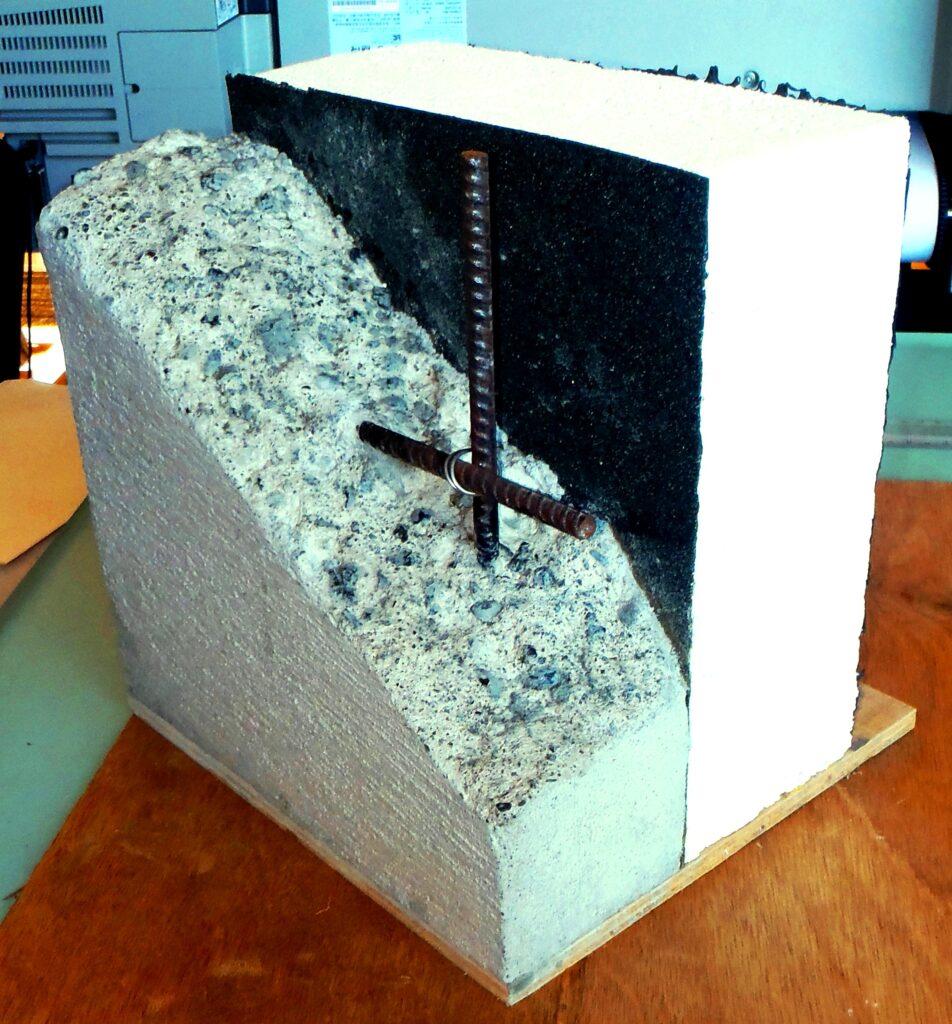
Let’s Improve 3D Printing!


Building Light
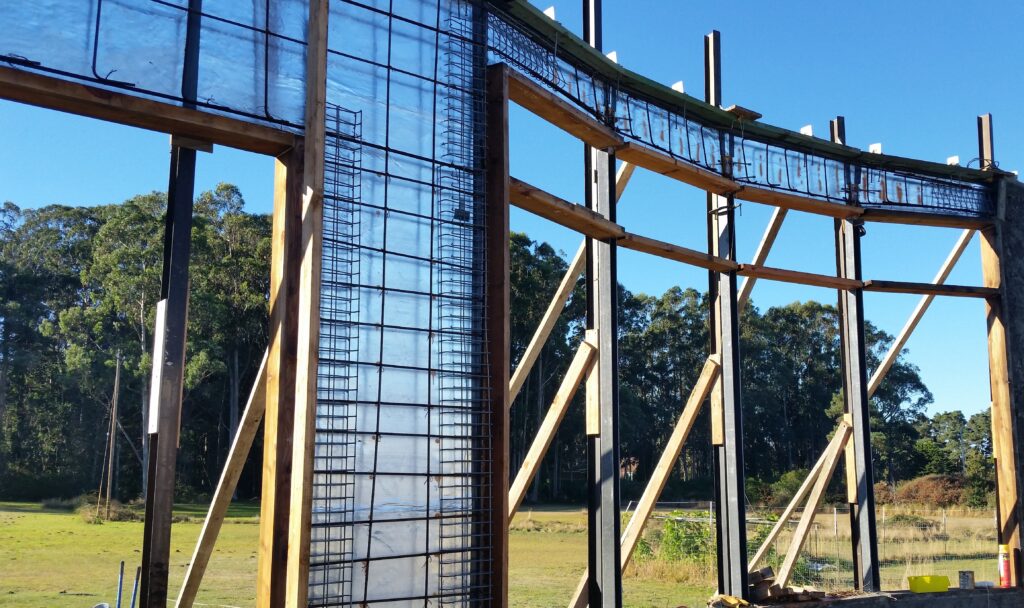
A test project just before concrete. The mini wire-cages are the seismic “boundary confining steel” required by ACI for slender shear walls. Compare this design to stay-in-place forms or other stacking block systems. Those cannot build this light and airy, because all their form ties get in the way of the finer reinforcing needed build light walls and beams. Get rid of all those foam-form ties, and reinforcing concrete becomes easier and faster. The SpaceCrete foam-one-side technique allows thinner-lighter-narrower concrete wall construction, in any seismic zone, because you don’t have to try to consolidate concrete down from the top of very tall/skinny forms…with lots of congested reinforcing and ties in the way, risking voids. These are 13’ tall concrete walls – within sight of the San Andreas fault – yet they are only 4” thick. A new design is 30’ tall with 4” thin walls! With this rapid slip-forming, concrete placement is facilitated around any required intensive reinforcing, because you have perfect access to pump concrete in from the side! During those few seconds that the concrete is slip-form-confined, you can vibrate-to-consolidate and then keep moving.
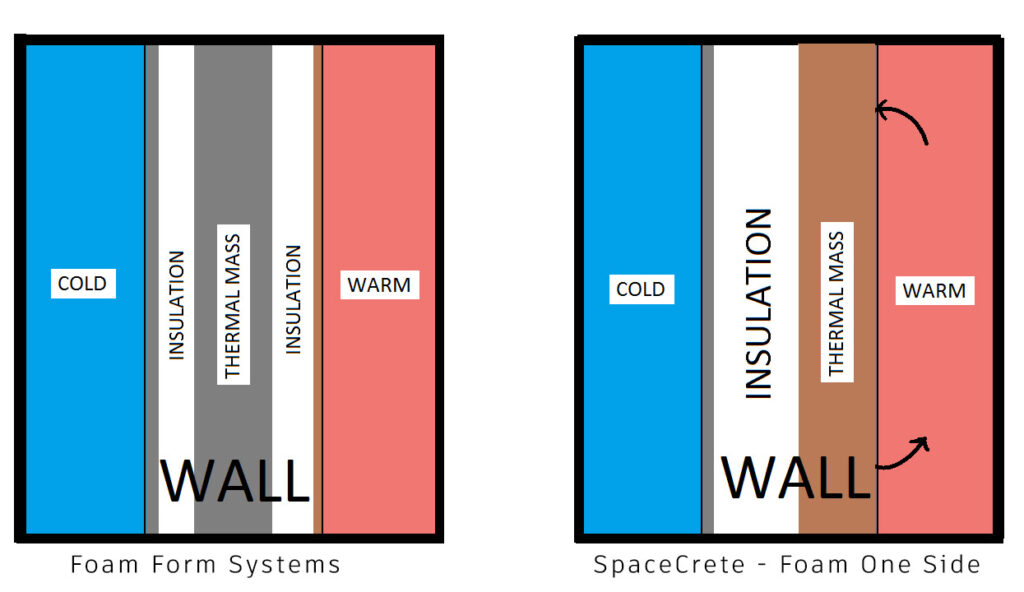
Building Science ain’t Rocket Science
Are your Winter nights cold, or Summer days hot? Thermal mass helps, of course. So if you build a concrete wall, why not put it where you need it – inside the conditioned space? And why not double the insulation thickness where it helps, and have none where it hurts? (Interior foam that then has to be drywalled-taped- extured-painted over) As a bonus, generic eps foam panels cost just a fraction of proprietary eps foam-form systems.


Minor Details
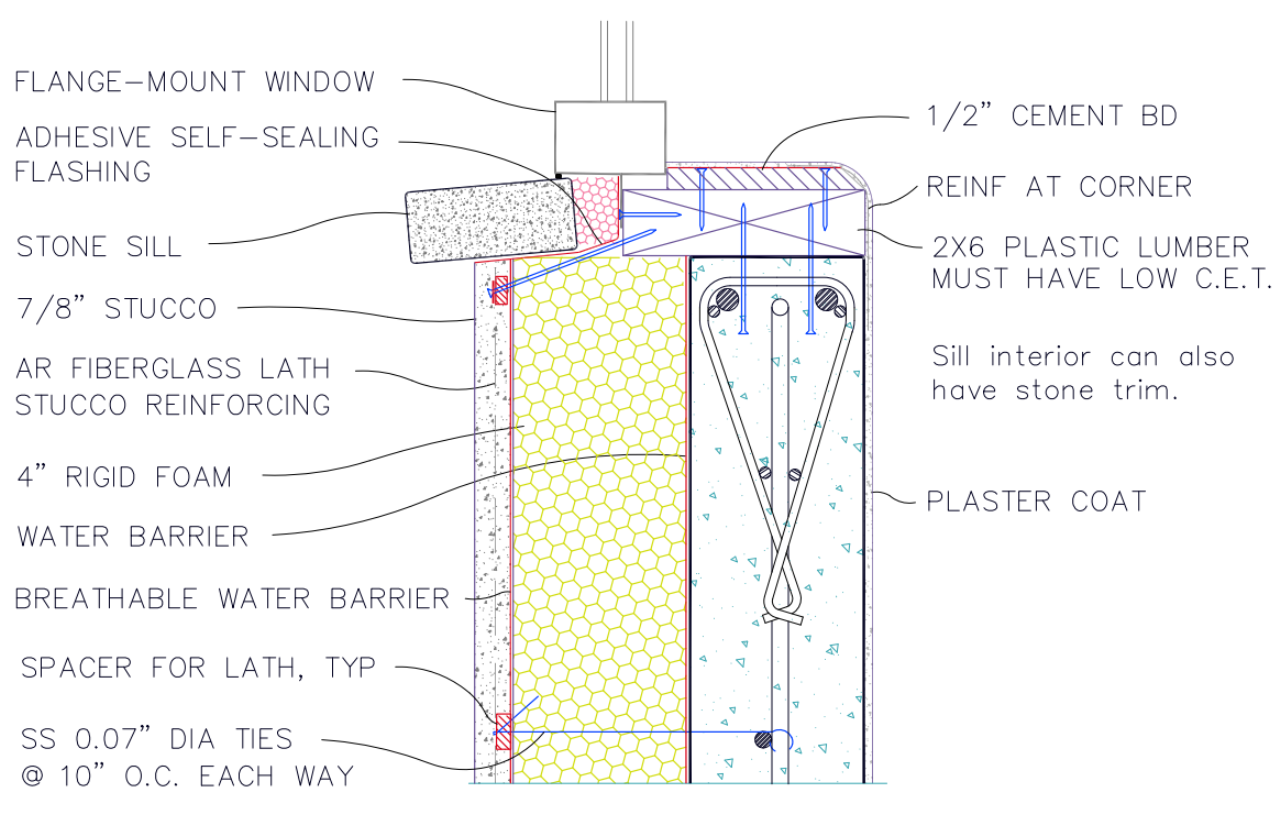
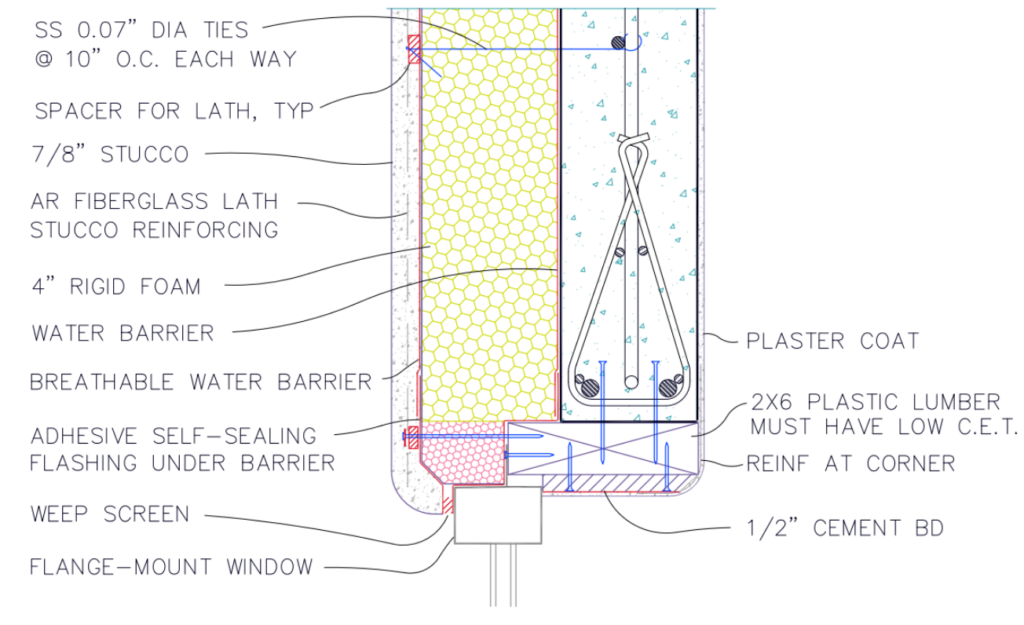
Early examples of window sill and head construction details, before we figured out using the window foam blockout. The structurally-required reinforcing here would be the same as for any concrete construction. Reinforcing needs are calculated identically as with traditionally formed concrete walls or insulated formed walls. A big difference is that SpaceCrete opens up possibilities to “build light” with concrete.
Save Big Bucks


Window and door bucks (to block-out concrete) are too expensive. Who needs them?
